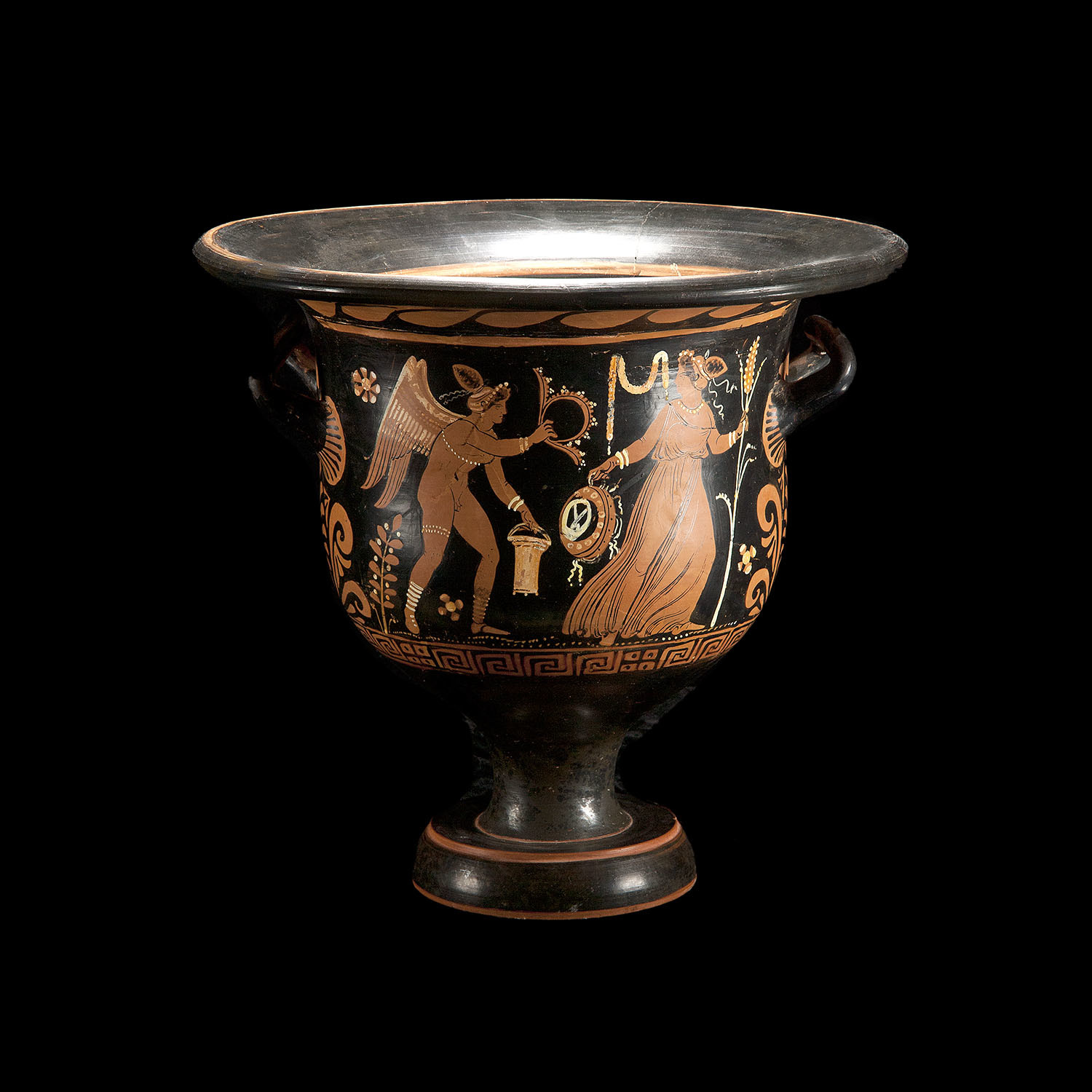SolaScriptura
2024 Supporter
- Jul 20, 2021
- 1,279
- 258
The Father Addresses Jesus Christ as The Creator
“And: In the beginning, Lord, You established the earth, and the heavens are the works of Your hands; they will perish, but You remain. They will all wear out like clothing; You will roll them up like a cloak, and they will be changed like a robe. But You are the same, and Your years will never end” (Hebrews 1:10-12)
This passage is continued from verse 5, where the Father begins to Address Jesus Christ:
“For to which of the angels did He say at any time, “You are my Son. Today I have become your Father?” and again, “I will be to Him a Father, and He will be to Me a Son?””
In verse 10, “Lord” is the Greek “Kurie”, which is in the vocative case, used in direct address, which here is by God the Father, to Jesus Christ.
The words in verses 10-12, are from Psalm 102, where it is used for Almighty God:
“I say: “My God (’êl), do not take me in the middle of my life! Your years continue through all generations. Long ago You established the earth, and the heavens are the work of Your hands. They will perish, but You will endure; all of them will wear out like clothing. You will change them like a garment, and they will pass away. But You are the same, and Your years will never end.” (verses 24-27)
The fact that God the Father here clearly Addresses Jesus Christ, as THE CREATOR of the entire universe, is the strongest Testimony that Jesus Christ is Almighty God. The passage in Psalm 102, is of Creation by Almighty God, and it is directly used for Jesus Christ in Hebrews, by God the Father.
In verse 6, of Hebrew 1, we have the Father Command (the Greek verb, “proskunēsatōsan”, is used in the imperative, “let Worship”) the Worship of Jesus Christ. In His continued Address to Jesus Christ, in verses 8 and 9, the Father says: “Your Throne O God is forever…therefore O God, Your God”. Clearly Two distinct Persons are GOD, the One Who is Addressing, and the Other Who is Addressed.
In Genesis 1:1 we read, “In the beginning Elohim Created the heavens and the earth”. The Hebrew “Elohim” is in the masculine plural, which cannot refer to One Person. The Bible is very clear that the Father and Jesus Christ are distinct Persons. The One “sends” and the Other is “sent”. This is not to show that the Sender is in any way “greater” than the One Sent, but to show there is a distinction between them. If, as some argue, that the God of the Bible is One Person, then the Hebrew “ʼêl” (God), which is the masculine singular would have been used, as it is done some 242 times in the Hebrew Old Testament, for The One True God. The plural is used over 2600 times. There is a reason for this, which is, there are times when the Godhead is in view, Which is Three distinct Persons, as in Creation (Genesis 1:1, etc). And, other times it is One Person in the Godhead Who is meant. A Good example is Isaiah 9:6, where “ʼêl” is used for Jesus Christ, “’êl Gibbôr” (Mighty God). And, in 10:21, the same “ʼêl” is used for the Father, Who is also called “’êl Gibbôr”.
Not only is Jesus Christ The Creator, as we have read the Testimony of this by God the Father; But, in Hebrews 2:10, we read of God the Father, also as The Creator:
“For it was fitting for Him, for whom are all things and by whom are all things, in bringing many sons to glory, to make the captain of their salvation perfect through sufferings”
Both “FOR whom” and “BY whom”, have the same Greek preposition, “di (dia)”, which is also used in Hebrews 1:2, “has in these last days spoken to us by His Son, whom He has appointed heir of all things, by (di) whom also He made the worlds”. If we are to understand 1:2, to mean, that the Father Created “through” Jesus Christ, as some argue. Then, who Created “through” the Father as in 2:10?
“And: In the beginning, Lord, You established the earth, and the heavens are the works of Your hands; they will perish, but You remain. They will all wear out like clothing; You will roll them up like a cloak, and they will be changed like a robe. But You are the same, and Your years will never end” (Hebrews 1:10-12)
This passage is continued from verse 5, where the Father begins to Address Jesus Christ:
“For to which of the angels did He say at any time, “You are my Son. Today I have become your Father?” and again, “I will be to Him a Father, and He will be to Me a Son?””
In verse 10, “Lord” is the Greek “Kurie”, which is in the vocative case, used in direct address, which here is by God the Father, to Jesus Christ.
The words in verses 10-12, are from Psalm 102, where it is used for Almighty God:
“I say: “My God (’êl), do not take me in the middle of my life! Your years continue through all generations. Long ago You established the earth, and the heavens are the work of Your hands. They will perish, but You will endure; all of them will wear out like clothing. You will change them like a garment, and they will pass away. But You are the same, and Your years will never end.” (verses 24-27)
The fact that God the Father here clearly Addresses Jesus Christ, as THE CREATOR of the entire universe, is the strongest Testimony that Jesus Christ is Almighty God. The passage in Psalm 102, is of Creation by Almighty God, and it is directly used for Jesus Christ in Hebrews, by God the Father.
In verse 6, of Hebrew 1, we have the Father Command (the Greek verb, “proskunēsatōsan”, is used in the imperative, “let Worship”) the Worship of Jesus Christ. In His continued Address to Jesus Christ, in verses 8 and 9, the Father says: “Your Throne O God is forever…therefore O God, Your God”. Clearly Two distinct Persons are GOD, the One Who is Addressing, and the Other Who is Addressed.
In Genesis 1:1 we read, “In the beginning Elohim Created the heavens and the earth”. The Hebrew “Elohim” is in the masculine plural, which cannot refer to One Person. The Bible is very clear that the Father and Jesus Christ are distinct Persons. The One “sends” and the Other is “sent”. This is not to show that the Sender is in any way “greater” than the One Sent, but to show there is a distinction between them. If, as some argue, that the God of the Bible is One Person, then the Hebrew “ʼêl” (God), which is the masculine singular would have been used, as it is done some 242 times in the Hebrew Old Testament, for The One True God. The plural is used over 2600 times. There is a reason for this, which is, there are times when the Godhead is in view, Which is Three distinct Persons, as in Creation (Genesis 1:1, etc). And, other times it is One Person in the Godhead Who is meant. A Good example is Isaiah 9:6, where “ʼêl” is used for Jesus Christ, “’êl Gibbôr” (Mighty God). And, in 10:21, the same “ʼêl” is used for the Father, Who is also called “’êl Gibbôr”.
Not only is Jesus Christ The Creator, as we have read the Testimony of this by God the Father; But, in Hebrews 2:10, we read of God the Father, also as The Creator:
“For it was fitting for Him, for whom are all things and by whom are all things, in bringing many sons to glory, to make the captain of their salvation perfect through sufferings”
Both “FOR whom” and “BY whom”, have the same Greek preposition, “di (dia)”, which is also used in Hebrews 1:2, “has in these last days spoken to us by His Son, whom He has appointed heir of all things, by (di) whom also He made the worlds”. If we are to understand 1:2, to mean, that the Father Created “through” Jesus Christ, as some argue. Then, who Created “through” the Father as in 2:10?




